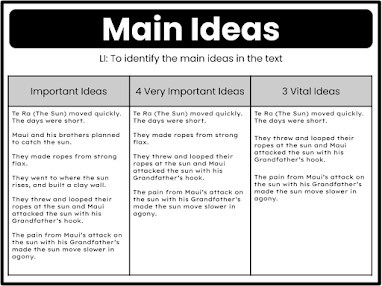To use decimal rounding, you should subtract from a decimal to round it and whatever has been subtracted should be added to the other decimal number. That will make it easier to add or subtract those numbers.
I am a Year 7 student at Panmure Bridge School in Auckland, NZ. I am in Learning Space 2 and my teachers are Mrs Anderson and Mrs Fisi'iahi.
Friday 25 June 2021
Decimal Rounding
Topic 5 - Flower power
Thursday 24 June 2021
Maori Vocabulary
Misery
Wednesday 23 June 2021
Main Ideas
Tuesday 22 June 2021
Venn Diagram
The Taonga of Storytelling
Friday 18 June 2021
Shoes Narrative
Topic 4 - Floating and Sinking
Thursday 17 June 2021
Exploring the Properties of a Quality Blogpost
Wednesday 16 June 2021
Mars Rover Facts
Short Division
Tuesday 15 June 2021
Dialogue
Friday 11 June 2021
Following Classroom Rules & Expectations | PB4L
Science Exploration Topic 3
Thursday 10 June 2021
Outside Function
We then went on to performing the experiment which was using a beaker to measure 100ml of water and transferred 40ml of water to a measuring cylinder. We used a pipette to make sure our measurement was exact using our knowledge of meniscus. Then, we added 3 more ml of water to the measuring cylinder using the pipette.
Afghanistan Travelling Brochure
LI: To create a brochure advertising a truthful visit at Afghanistan.
Our reading focus was around Afghanistan and creating informed opinions on a text or informative article. The text we explored was focused around attracting tourists despite the recent dangers and attacks that have been occurring in Afghanistan.
Our creative task was to construct an informative brochure that could persuade foreigners to visit Bamyan, Afghanistan on an escorted tour.
We read through the article and shared our thoughts using information that we knew about the topical issue. We used different reading comprehension strategies to understand the text in a more clear and direct way. We used questions to help us understand the text better, skimming and scanning to evaluate the text even more and summarising in order to retell the text with our own form of comprehension.
I found this task fairly easy because I am familiar with creating persuasive brochures that advertise an area, and I was able to use my prior understanding of a text to make and share my formed opinions with others.
PB4L - Expectations
LI: To understand the expectations set for us as the role models of the school.
Our topic for PB4L this week was focused around the expectations and rules set for us, and we should know how to understand and carry them out because we are the role models of the school. As a class, we talked about the expectations of a wet day monitor, the common rules inside of the classroom and what is expected from the teachers.
Some students showed us an example of how we can show respect in other classrooms as well as our own. They roleplayed an example of what they should do if a class was acting up during a wet-day and including other students during a casual conversation. More topics that we talked about was the necessary noise volume in different situations.
I found this lesson interesting but easy to understand because I am familiar with respecting the classroom rules and following expectations to a high standard.
Friday 4 June 2021
Book Week
Samoan Language Week
LI: To pay it forward by creating a screencastify that teaches others how to use Samoan words and phrases.
Student Led Conferences
Science Exploration
We used a beaker to measure 100ml of water and transferred 40ml of water to a measuring cylinder. We used a pipette to make sure our measurement was exact using our knowledge of meniscus. Then, we added 3 more ml of water to the measuring cylinder using the pipette.
Thursday 3 June 2021
Celebrating Book Week
Cinquain Poem
Cinquain Poem
LI: To write a cinquian poem to describe a polar bear.


















